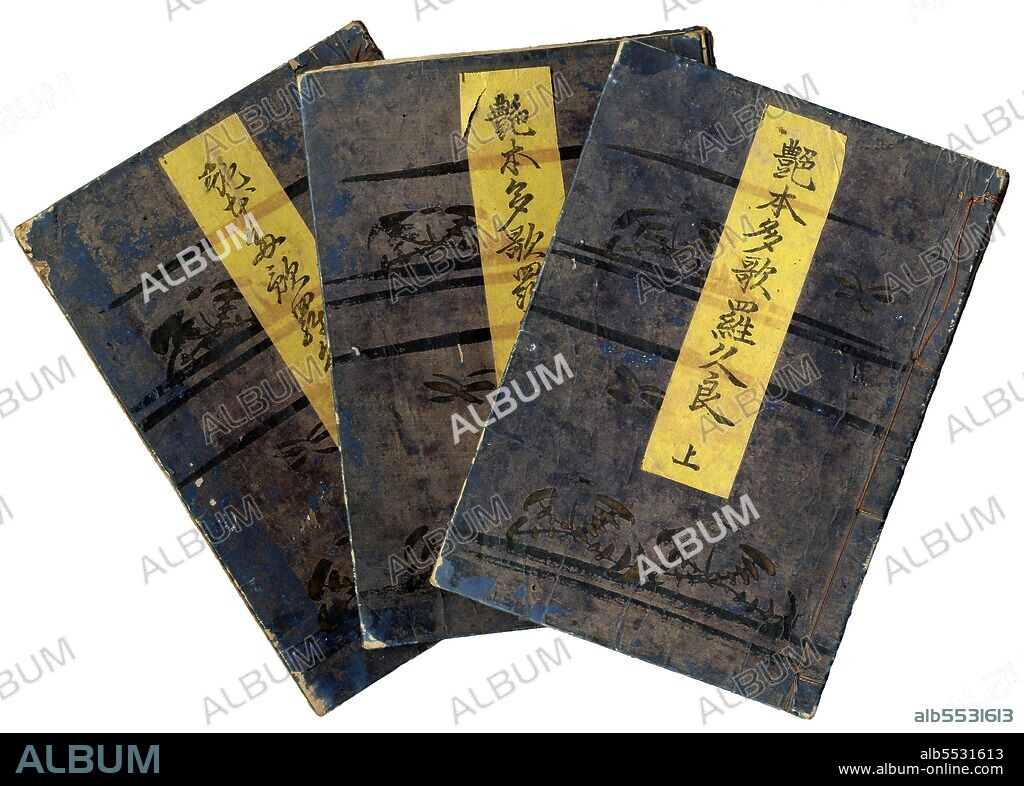alb5531613
Japan: A set of three enpon (bound collections of shunga in book form) illustrated by Kitagawa Utamaro (1753-1806) with text by Bakin, issued in Edo (Tokyo),1800

|
Add to another lightbox |
|
Add to another lightbox |



Title:
Japan: A set of three enpon (bound collections of shunga in book form) illustrated by Kitagawa Utamaro (1753-1806) with text by Bakin, issued in Edo (Tokyo),1800
Caption:
Shunga (???) is a Japanese term for erotic art. Most shunga are a type of ukiyo-e, usually executed in woodblock print format. While rare, there are extant erotic painted handscrolls which predate the Ukiyo-e movement. Translated literally, the Japanese word shunga means picture of spring; 'spring' is a common euphemism for sex. The ukiyo-e movement as a whole sought to express an idealisation of contemporary urban life and appeal to the new chonin class. Following the aesthetics of everyday life, Edo period shunga varied widely in its depictions of sexuality. As a subset of ukiyo-e it was enjoyed by all social groups in the Edo period, despite being out of favour with the shogunate. Almost all ukiyo-e artists made shunga at some point in their careers, and it did not detract from their prestige as artists. Classifying shunga as a kind of medieval pornography can be misleading in this respect.
Credit:
Album / Pictures From History/Universal Images Group
Releases:
Model: No - Property: No
Rights questions?
Rights questions?
Image size:
5000 x 3578 px | 51.2 MB
Print size:
42.3 x 30.3 cm | 16.7 x 11.9 in (300 dpi)
Keywords:
ART • ARTS • ASIA PICTURES • ASIA • ASIAN IMAGE • ASIAN IMAGES • ASIAN PICTURES • ASIAN • BOOK • BOOKS • ENPON • FLOATING WORLD • HISTORIA UNIVERSAL • HISTORICAL IMAGES • HISTORICAL PICTURES • HISTORICAL • HISTORY IMAGES • HISTORY PICTURES • HISTORY • HUMAN SEXUALITY • JAPAN • JAPANESE • LEGEND • LIBRO • PAINT • PAINTING • SHUNGA • UKIYO-E • UTAMARO, KITAGAWA • WOMAN • WOMEN • WOMENS • WOODBLOCK
 Pinterest
Pinterest Twitter
Twitter Facebook
Facebook Copy link
Copy link Email
Email

